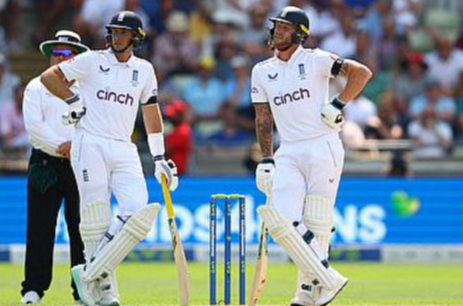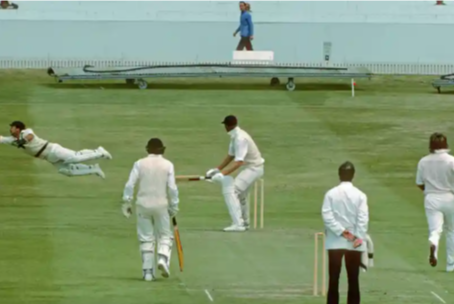Top Cricket Strategies: How Teams Win Matches Consistently
In the competitive realm of cricket, teams consistently seek strategies that enhance their chances of victory. Analyzing game dynamics, optimizing batting orders, and innovating bowling techniques are pivotal. Data-driven insights into player performance can reveal critical strengths and weaknesses. Furthermore, effective leadership and team cohesion significantly influence outcomes. Understanding these elements is essential, yet the execution of such strategies often defines a team’s success. What specific tactics can make the difference in crucial matches?
Understanding the Importance of Game Analysis
Game analysis serves as a critical framework for understanding the dynamics of cricket matches. By examining game trends, teams can identify patterns that influence outcomes, allowing for informed strategic decisions.
Performance metrics, such as batting averages and bowling economies, provide quantifiable insights into individual and team effectiveness. This analytical approach fosters a deeper comprehension of opponents’ strengths and weaknesses, facilitating adaptive strategies during matches.
Moreover, the integration of data analytics enhances decision-making processes, enabling teams to optimize player roles and match tactics. Ultimately, a strong grasp of game analysis empowers teams to navigate the complexities of cricket, ensuring they remain competitive and responsive in an ever-evolving sport that values strategic freedom and innovation.
Read more: The Impact of Technology on Modern Cricket: DRS and Beyond
Creating a Flexible Batting Order
While traditional batting orders often adhere to rigid structures, a flexible batting order can significantly enhance a team’s adaptability and performance in various match situations.
Batting flexibility allows teams to respond dynamically to the specific challenges posed by opposition bowlers and match conditions. By making timely order adjustments, teams can optimize their scoring potential, particularly when chasing targets or setting them.
For example, promoting aggressive batsmen up the order can counteract sustained pressure, while anchoring innings with dependable players can stabilize the team during precarious phases.
Ultimately, the ability to alter batting roles not only maximizes individual strengths but also fosters a collaborative team environment, empowering players to contribute effectively according to the evolving landscape of the match.
Innovative Bowling Strategies
Innovative bowling strategies significantly impact a team’s ability to secure victories in cricket.
By incorporating variations in bowling techniques, such as spin, seam, and pace changes, bowlers can disrupt a batsman’s rhythm and decision-making.
Additionally, strategic field placements enhance the effectiveness of these techniques, allowing for targeted pressure on batsmen and increased chances of dismissals.
Variations in Bowling Techniques
Bowling variations serve as a crucial element in cricket strategy, allowing bowlers to outsmart batsmen by disrupting their rhythm and expectations.
Spin variations, such as sliders and doosras, challenge batsmen’s ability to read the ball, while pace changes, including slower balls and yorkers, can catch even the most seasoned players off guard.
By expertly mixing these techniques, bowlers create uncertainty, forcing batsmen into making mistakes.
The effectiveness of these variations lies in their unpredictability; a bowler who can seamlessly transition between spin and pace not only enhances their personal arsenal but also amplifies the team’s overall competitiveness.
Understanding the psychological impact of these strategies is vital for bowlers seeking to dominate matches consistently.
Strategic Field Placements
Strategic field placements play a pivotal role in enhancing the effectiveness of bowling strategies in cricket. By employing aggressive positioning, teams can create pressure on batsmen, forcing errors and capitalizing on scoring opportunities.
Unconventional setups, such as placing fielders in non-traditional locations, can disrupt the batsman’s rhythm and challenge their shot selection. For instance, a slip fielder positioned unusually close can induce an edge, while a deep square leg can deter expansive shots.
These innovative strategies not only optimize the strengths of bowlers but also adapt to the unique dynamics of each match. Ultimately, the ability to strategically manipulate field placements reflects a team’s tactical acumen, elevating their chances of consistent success on the field.
Utilizing Data and Analytics for Player Performance
A growing body of evidence suggests that data and analytics play a pivotal role in enhancing player performance in cricket. Teams increasingly leverage player metrics to assess individual strengths and weaknesses, enabling tailored training regimes.
By analyzing performance trends, coaches can identify key areas for improvement and optimize players’ skills accordingly. Moreover, data-driven insights assist in match preparation, allowing teams to strategize against specific opponents based on historical performance analytics.
This systematic approach not only fosters player development but also facilitates informed decision-making during matches. Ultimately, embracing data and analytics empowers teams to enhance player performance consistently, leading to a more competitive edge in the dynamic landscape of cricket.
Mastering Field Placements and Tactics
Effective field placements and tactical decisions are crucial components that significantly influence the outcome of cricket matches. Teams that excel often employ aggressive positioning to disrupt the batting rhythm, creating pressure that can lead to mistakes. This involves strategically placing fielders in high-risk areas, capitalizing on a batter’s weaknesses.
Additionally, unconventional formations can be pivotal; teams may deploy atypical arrangements that catch opponents off guard, forcing them into unfamiliar scenarios. Such tactics require a deep understanding of both the players’ capabilities and the match context.
The Role of Leadership and Team Morale
Leadership and team morale serve as pivotal forces shaping a cricket team’s performance on and off the field. Effective leadership styles, whether authoritarian, democratic, or transformational, significantly influence team cohesion.
Leaders who foster open communication and trust create an environment where players feel valued and motivated. This psychological safety enhances morale, allowing team members to perform at their best.
Moreover, a strong leader can navigate challenges and conflicts, ensuring that the focus remains on collective goals rather than individual aspirations. High morale, in turn, cultivates resilience during high-pressure situations, leading to consistent performance.
Consequently, teams with robust leadership and solid morale are better equipped to adapt, strategize, and ultimately secure victories, reinforcing the importance of these elements in cricket.
Adapting to Different Formats and Conditions
Success in cricket requires teams to navigate a variety of formats and conditions, each presenting unique challenges and opportunities. Format adaptability is crucial; teams must adjust their strategies for Test matches, One Day Internationals, and T20s, each demanding different pacing, aggression, and resource management.
Additionally, condition assessment plays a vital role in determining the effectiveness of tactics. Factors such as pitch behavior, weather conditions, and venue characteristics can significantly influence game outcomes. Teams that excel in analyzing these variables can optimize their lineups and decision-making processes.
Conclusion
In the dynamic landscape of cricket, success hinges on a multifaceted approach that melds strategy with adaptability. Teams that embrace game analysis, flexible batting orders, and innovative bowling techniques operate like a well-tuned orchestra, harmonizing individual strengths to outmaneuver opponents. By leveraging data analytics and fostering strong leadership, they cultivate resilience and collaboration. Ultimately, these strategies not only enhance competitiveness but also lay the foundation for consistent victories, underscoring the essence of teamwork in the sport.





